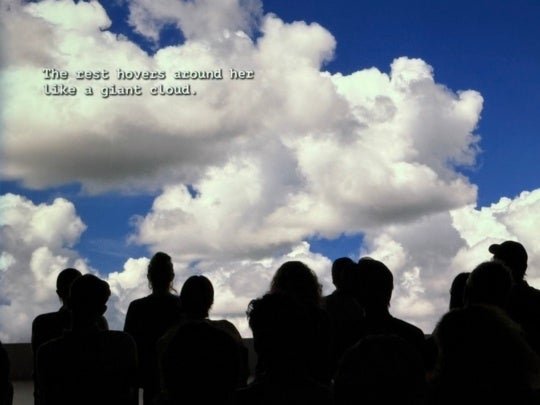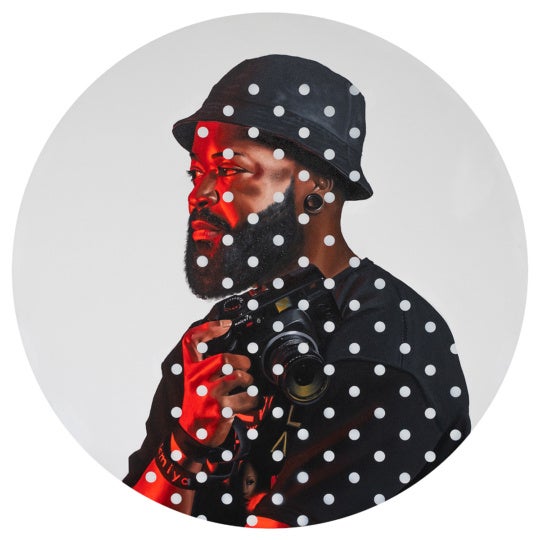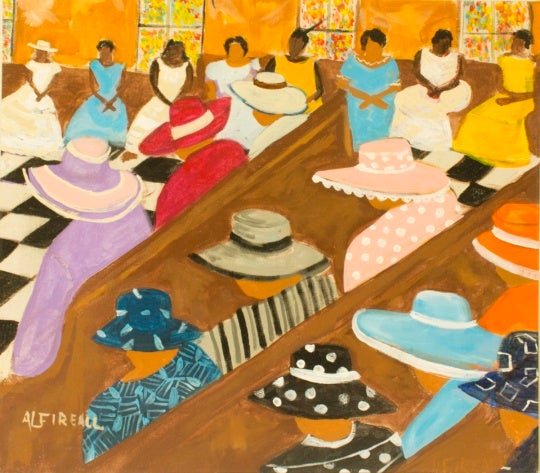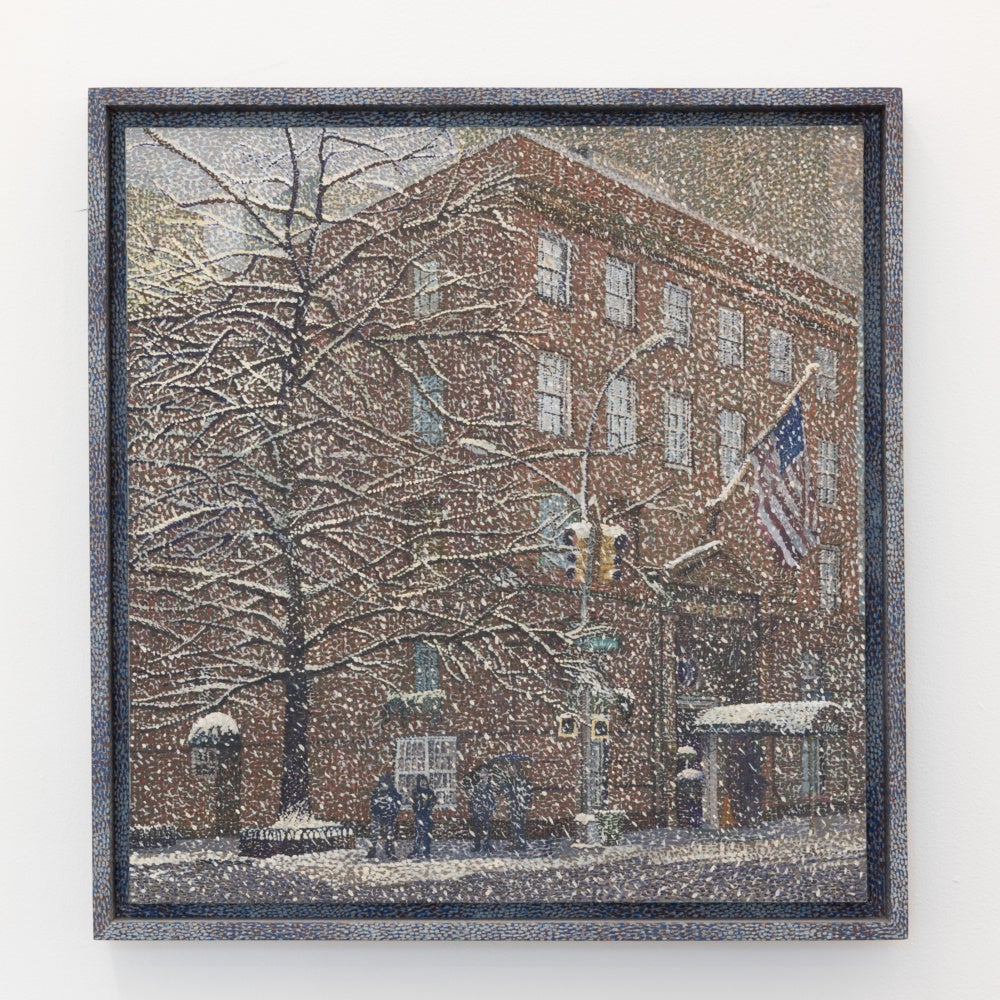
Like migratory birds flying south for the winter, “Snow Birds” are what the people of Florida call the throngs of tourists and temporary residents that flock to their state in the colder months. They are the masses of sunburnt Midwesterners and Northeasterners that queue for rides at Walt Disney World and invade the beaches during Spring Break. Florida’s economy depends on tourists, and that fosters a dismissive feeling that lends the term a pejorative connotation. As Floridians, we can’t live with them and we can’t live without them.
Residents have a hard time seeing Florida through the Snow Birds’ eyes. If you’ve lived here your entire life—suffering the humid, hurricane-ridden summers and the state’s migrant-driven slide toward reactionary politics—you don’t see the place as the tropical paradise the tourists do. Yet, as an exhibition at KDR Gallery in Miami argues, there is an appeal to wearing rose-colored glasses. For Florida Room No. 3: Snow Birds, the gallery asked artists from outside the state to submit work focusing on their own views of the state of Florida.
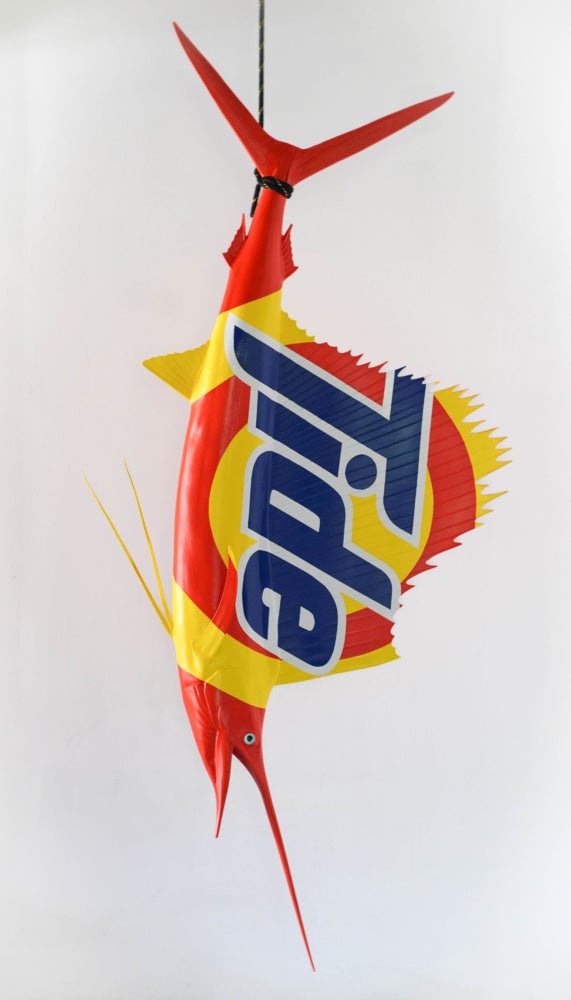
Those views, and the art that results from them, are eclectic to say the least. There’s a lot of fauna, mostly sculptural, including a pair of literal “snow birds” by Monsieur Zohore, a New York and Baltimore-based artist, carved from ice and stuck in a windowed minifridge. Ryan Metke, who is also from New York, supplied a few sculptures, including a naturalistic steel bust of a pelican diving, Anatomy of a Feather, 2024. More attention-grabbing is his fiberglass replica marlin, emblazoned with the Tide detergent logo and given the punny title High Tide (2024), which riffs on a common piece of kitschy Florida decor.
Uninspired references to drugs and Miami Vice also abound: Vice White (2024), a painting by Royal Jarmon of Brooklyn, included a mirrored white Ferrari from the namesake television show. Additionally, Soft Cocaine with Viagra and Alprazolam (2023) a soft sculpture by Al Freeman, another New Yorker, includes a baggie of pills and another kind of “snow.” Many in the Miami arts community have sought to position the city as a serious art destination; these additions suggest that some artists still view the place through the lens of coke-fueled Art Basel parties. Notably, none of the works on view seemed to have climate change on the mind.
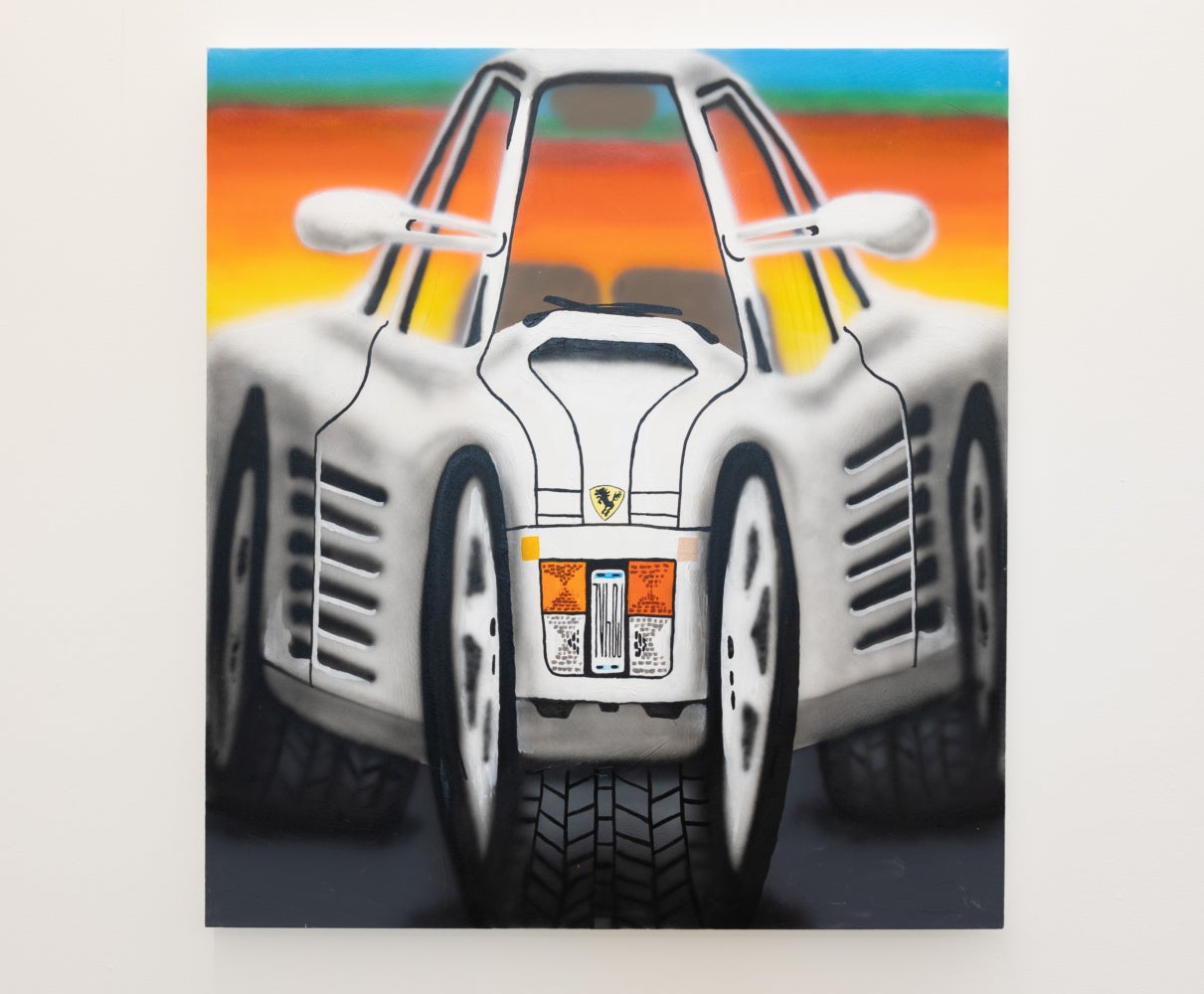
The piece I found myself most drawn to amidst this riot of kitsch and color was a chilly scene of winter by Cynthia Talmadge, yet another New Yorker. Frank E. Campbell (Snow) (2018) depicted the Manhattan funeral home that has served the likes of John Lennon and Judy Garland in the midst of a blizzard, with snow covering even the frame. Perhaps because of its relative distinctiveness—a small, somewhat drab painting in a room full of flashier work—it kept drawing me in. I’ve always believed that Florida is only attractive to those from outside, and the born-and-breds are always looking for greener pastures (or colder climes). Soon the rest of the world will be as hot as Florida is, but by then, will the Snowbirds fly north on holiday, in search of the snow they left behind?
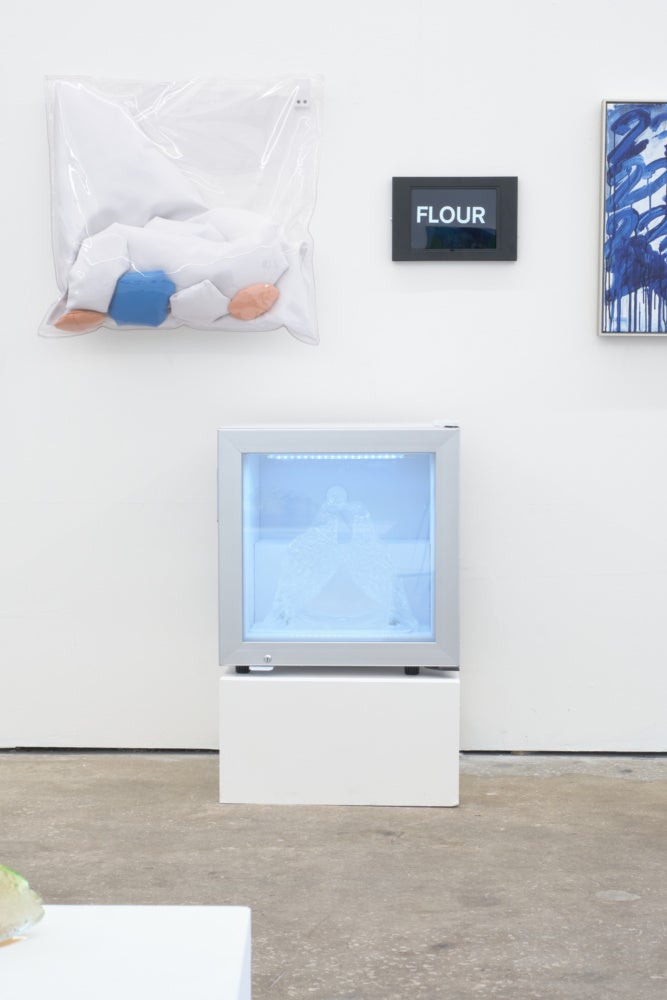
Florida Room No. 3: Snow Birds is on view at KDR, Miami through August 17, 2024.

